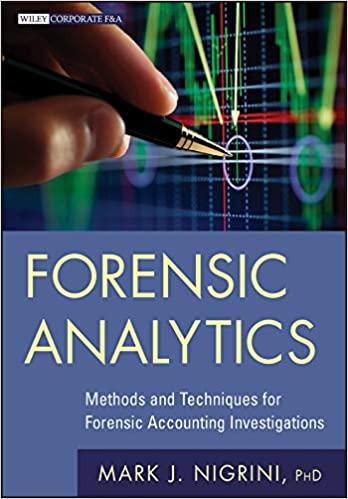Question
- Compute the predetermined overhead rate, and use the rate to assign overhead to units or services produced. - Prepare the journal entries associated with
- Compute the predetermined overhead rate, and use the rate to assign overhead to units or services produced.
- Prepare the journal entries associated with job-order costing.
Tonya Martin, CMA and controller of the Parts Division of Gunderson Inc., was meeting with Doug Adams, manager of the division. The topic of discussion was the assignment of overhead costs to jobs and their impact on the division's pricing decisions. Their conversation was as follows:
Tonya: Doug, as you know, about 25% of our business is based on government contracts, with the other 75% based on jobs from private sources won through bidding. During the last several years, our private business has declined. We have been losing more bids than usual. After some careful investigation, I have concluded that we are overpricing some jobs because of improper assignment of overhead costs. Some jobs are also being underpriced. Unfortunately, the jobs being overpriced are coming from our higher-volume, labor-intensive products, so we are losing business.
Doug: I think I understand. Jobs associated with our high-volume products are being assigned more overhead than they should be receiving. Then when we add our standard 40% markup, we end up with a higher price than our competitors, who assign costs more accurately.
Tonya: Exactly. We have two producing departments, one labor-intensive and the other machine-intensive. The labor-intensive department generates much less overhead than the machine-intensive department. Furthermore, virtually all of our high-volume jobs are labor-intensive. We have been using a plantwide rate based on direct labor hours to assign overhead to all jobs. As a result, the high-volume, labor-intensive jobs receive a greater share of of the machine-intensive department's overhead than they deserve. This problem can be greatly alleviated by switching to departmental overhead rates. For example, an average high-volume job would be assigned $100,000 of overhead using a plantwide rate and only $70,000 using departmental rates. The change would lower our bidding price on high-volume jobs by an average of $42,000 per job. By increasing the accuracy of our product costing, we can make better pricing decisions and win back much of our private-sector business.
Doug: Sounds good. When can you implement the change in overhead rates?
Tonya: It won't take long. I can have the new system working within four to six weekscertainly by the start of the new fiscal year.
Doug: Hold it. I just thought of a possible complication. As I recall, most of our government contract work is done in the labor-intensive department. This new overhead assignment scheme will push down the cost on the government jobs, and we will lose revenues. They pay us full cost plus our standard markup. This business is not threatened by our current costing procedures, but we can't switch our rates for only the private business. Government auditors would question the lack of consistency in our costing procedures.
Tonya: You do have a point. I thought of this issue also. According to my estimates, we will gain more revenues from the private sector than we will lose from our government contracts. Besides, the costs of our government jobs are distorted. In effect, we are overcharging the government.
Doug: They don't know that and never would unless we switch our overhead assignment procedures. I think I have the solution. Officially, let's keep our plantwide overhead rate. All of the official records will reflect this overhead costing approach for both our private and government business. Unofficially, I want you to develop a separate set of books that can be used to generate the information we need to prepare competitive bids for our private-sector business.
Step by Step Solution
There are 3 Steps involved in it
Step: 1

Get Instant Access to Expert-Tailored Solutions
See step-by-step solutions with expert insights and AI powered tools for academic success
Step: 2

Step: 3

Ace Your Homework with AI
Get the answers you need in no time with our AI-driven, step-by-step assistance
Get Started


